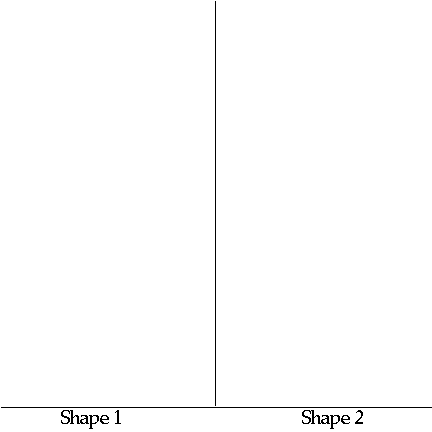
In this activity, you and your team members will use the methods pioneered by Ernest Rutherford in the early 1900s and still used by particle physicists in their accelerator experiments today. These methods enable scientists to identify the characteristics of particles that they cannot actually see. You will learn how precise your measurements must be when you can't see what you are studying.
On your team's experiment table there is a large wooden board, under which your teacher has placed a flat shape.
Your team's job is to identify the shape without ever seeing it. You can only roll marbles against the hidden object and observe the deflected paths that the marbles take. Your team will have five minutes to "observe" a shape.
Place a piece of paper on top of the board for sketching the paths of the marbles. Then analyze this information to determine the object's actual shape. Draw a small picture of each shape you studied in the boxes below, and answer the following questions.

1. Can you tell the size of the object as well as its shape?
_______________________________________________
2. How could you find out whether the shape has
features that are small compared to the size of your
marbles?
_______________________________________________
_______________________________________________
_______________________________________________
3. Without looking, how can you be sure of your
conclusions?
_______________________________________________
_______________________________________________
_______________________________________________